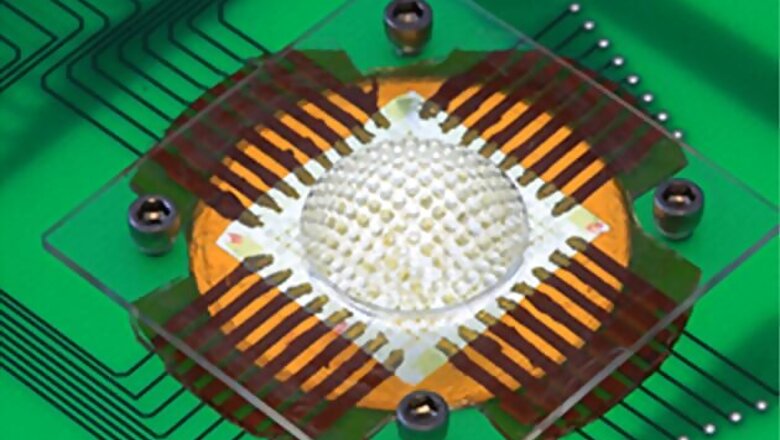
views
Washington: Bug's eye view! Scientists have developed a new insect-inspired camera system which can take pictures across nearly 180 degrees and deliver exceptionally sharp images.
Inspired by the complex fly eye, an interdisciplinary team led by researchers at the University of Illinois and the Northwestern University has developed a hemispherical digital camera with 180 miniature lenses and exceptionally wide-angle field of view.
Humans capture pictures using the two lenses of our relatively flat eyes, while a top-of-the-line SLR camera has just one flat lens.
The new camera - a rounded half bubble, similar to a bulging fly eye - has 180 micro-lenses mounted on it, allowing it to take pictures across nearly 180 degrees. Only a camera shaped like a bug's eye can do this.
With this wide-angle field of view, the new technology could be used in future surveillance devices or for imaging in endoscopic procedures.
The researchers say it would be simple enough to combine two of the hemispheres they've demonstrated to get a 360-degree view.
"What we have, in a sense, is many small eyes on one big eye," said Yonggang Huang, a senior author of the paper.
"Each small eye, composed of a micro-lens and a micro-scale photodetector, is a separate imaging system, but when they are all taken together, the camera can take a clear picture, with just one snap, of nearly 180 degrees.
"The interface of different fields generates interesting new devices that never existed before," he said.
"Full 180-degree fields of view with zero aberrations can only be accomplished with image sensors that adopt hemispherical layouts - much different than the planar CCD chips found in commercial cameras," said Professor John A Rogers.
"When implemented with large arrays of micro-lenses, each of which couples to an individual photodiode, this type of hemispherical design provides unmatched field of view and other powerful capabilities in imaging," he said.
The 180 micro-lenses of Roger and Huang's camera is comparable to the eye of fire ants and bark beetles, but less than the fly eye, which has thousands of small eyes.
"Existing camera imaging technology is flat, and we made a system that is curvilinear," Huang said.
Details of the bio-inspired camera have been published in the journal Nature.


















Comments
0 comment